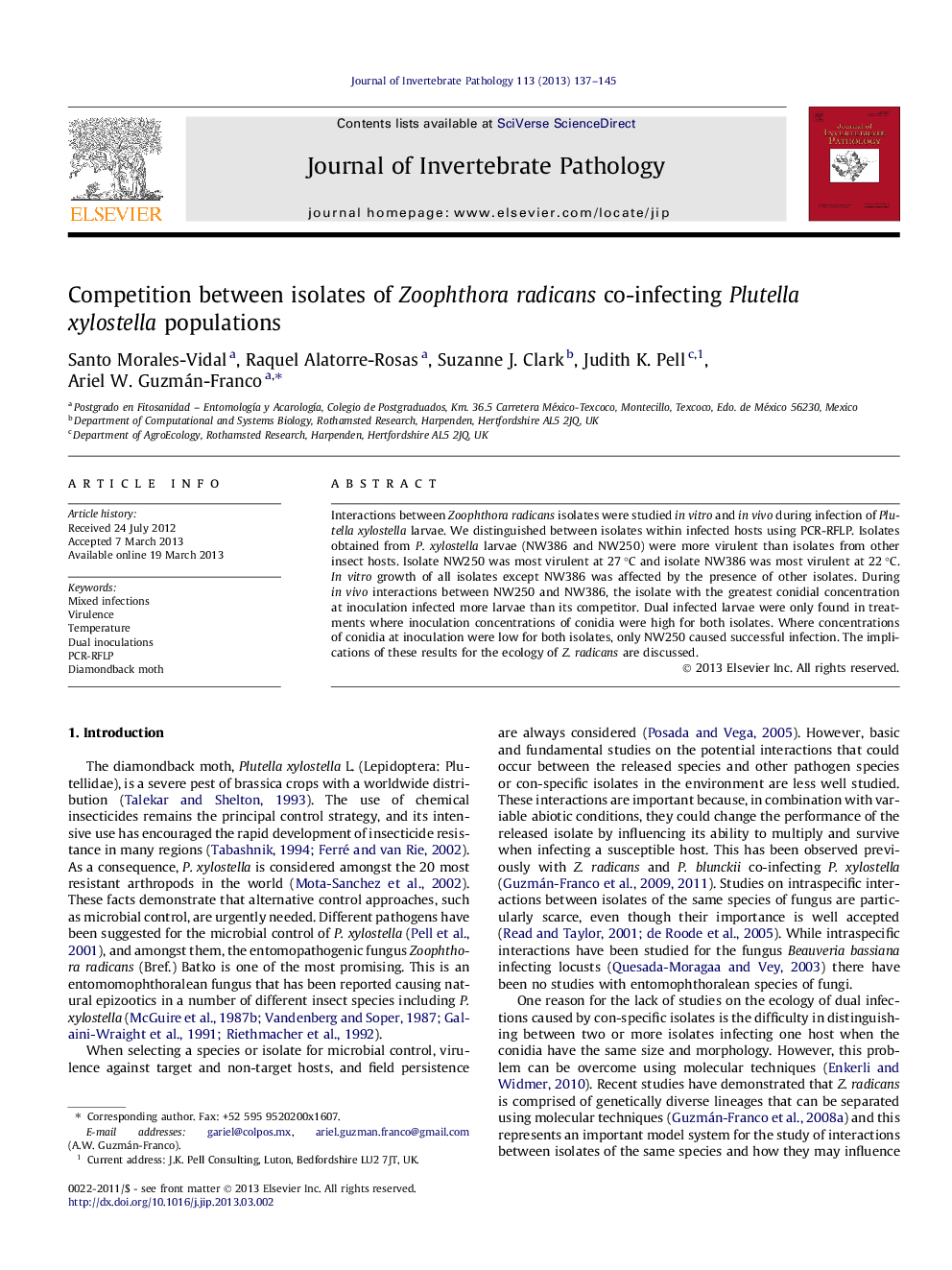| Article ID | Journal | Published Year | Pages | File Type |
|---|---|---|---|---|
| 4557848 | Journal of Invertebrate Pathology | 2013 | 9 Pages |
•Interactions between Zoophthora radicans isolates in Plutella xylostella larvae were studied.•Isolates from P. xylostella were more virulent than isolates from other insect hosts.•Overall infection was greatest at 22 than at 27 °C.•Isolates with similar virulence can co-exist in P. xylostella larvae.
Interactions between Zoophthora radicans isolates were studied in vitro and in vivo during infection of Plutella xylostella larvae. We distinguished between isolates within infected hosts using PCR-RFLP. Isolates obtained from P. xylostella larvae (NW386 and NW250) were more virulent than isolates from other insect hosts. Isolate NW250 was most virulent at 27 °C and isolate NW386 was most virulent at 22 °C. In vitro growth of all isolates except NW386 was affected by the presence of other isolates. During in vivo interactions between NW250 and NW386, the isolate with the greatest conidial concentration at inoculation infected more larvae than its competitor. Dual infected larvae were only found in treatments where inoculation concentrations of conidia were high for both isolates. Where concentrations of conidia at inoculation were low for both isolates, only NW250 caused successful infection. The implications of these results for the ecology of Z. radicans are discussed.
Graphical abstractBanding patterns generated by the restriction enzyme DdeI using PCR products amplified from within the ITS region, using genomic DNA extracted from larvae infected either by the Zoophthora radicans isolates NW386 (1), NW250 (2) or dual infectd by both isolates (3).Figure optionsDownload full-size imageDownload as PowerPoint slide
